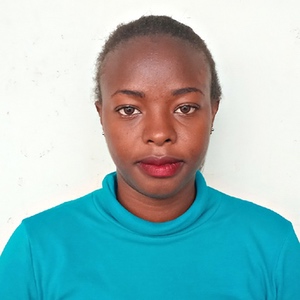Chavakali Primary School started in 1932. Since then, it's given birth to Chavakali High School, which has become one of the leading national high schools in the country.
Chavakali Primary currently has an enrollment on 550 students, of which 290 are boys and 260 are girls. They are taught by 17 teachers and supported by two additional staff.
Students are seen arriving as early as 6:30am to do general cleaning of the campus and its classrooms. This must be done by 8am, when students are required to sit for a 20-minute study hall. Lessons start at 8:20 and go until lunch, when students are sent back home to find lunch. The school has set up a lunch program, but they can only afford to serve class eight with maize and beans.
The others are required to be back at 2pm when classes continue until 3:10pm. They must clean again until 4pm and then sit for study hall before they're dismissed for the day at 5pm.
Water
There are two small plastic tanks in the school for catching rainwater. With over 500 students using water, these only last a short time without rain. There's a protected spring right at the school, but it only flows during the rainy months. That means that for a good part of the year, students are sent out in search of water. Teachers ask that they walk to the nearest clean water source, Wadoli Spring which is 1.5 kilometers away.
The oldest students bring small jerrycans of two to five liters to Wadoli Spring, traveling in groups for safety. When delivered to school, water is poured into 200-liter skyplast containers. Teachers regret how much these trips are eating into class time, but that's not the biggest issue: After these long trips back with open containers, this water is no longer clean.
"We shall be more than thankful for the project being brought to us. We are straining so much in getting clean and safe water for drinking, and also our pupils are wasting so much time to go to Wadoli Spring to fetch water so as to serve us in school," Headteacher Gerishom Chavangi said.
Sanitation
With so much time used to get enough water for drinking and cooking lunch for class eight, there certainly isn't enough time or water for good hygiene and sanitation.
The students often miss school because of diarrhea and infections, and the headteacher knows that this must be because there isn't enough water for hand-washing. Students often end up eating snacks and taking tea with filthy hands.
There are useable latrines for the boys and girls, but they are too few and reek without ventilation. The boys' and girls' latrines are near one another with no privacy between them. The pits are almost full, and staff must use these too. Without enough facilities nor water to maintain them, the students and staff suffer dangerous conditions.
Here's what we're going to do about it:
Training
There will be two days for teachers, students, and parents to meet at the school to learn about hygiene and sanitation practices. They will also attend sessions on the management and maintenance of their new rainwater catchment tank, latrines, and hand-washing stations. We will use all of our training topics to empower participants to invest their time in positive behaviors that promote health, prolong life, and enable them to become more self-reliant citizens.
The facilitator will use PHAST (participatory hygiene and sanitation transformation), ABCD (asset-based community development), CTC (child to child), lectures, group discussions, and handouts to teach health topics and ways to promote good practices within the school. The CTC method will prepare students to lead other students into healthy habits, as well as kickstart a CTC club for the school.
Handwashing Stations
The two handwashing stations are 50-liter plastic barrels on metal stands. Each has a tap to conserve water. These are often delivered by hygiene and sanitation training so they can be used for demonstrations, but always arrive by a project's completion.
The CTC club will be in charge of filling these stations with water and will ensure that there is always a cleaning agent like soap or ash.
VIP Latrines
Two triple-door latrines will be constructed with local materials that the school will help gather. Three doors will be set aside for each gender. And with a new source of water on school grounds, students and staff should have enough to keep these new latrines clean.
Rainwater Catchment Tank
A 50,000-liter rainwater catchment tank will help alleviate the water crisis at this school. The school will also help gather the needed materials such as sand, rocks, and water from the spring for mixing cement. Once finished, this tank can begin catching rainfall that will be used by the school’s students and staff. Students will no longer waste valuable time journeying back and forth to Walodeya Spring.
We and the school strongly believe that with this assistance, standards will significantly improve. These higher standards will translate to better academic performance for these little scholars!



 Rehabilitation Project
Rehabilitation Project



















